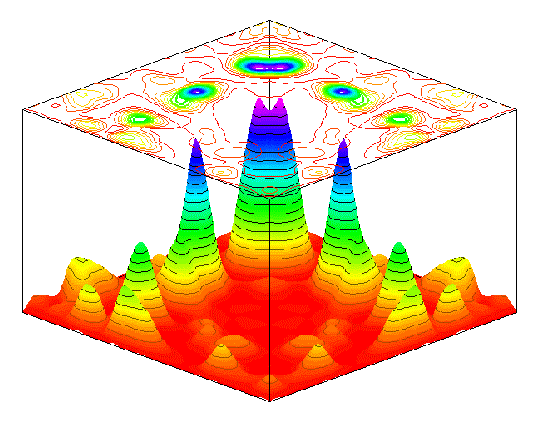Similarities among the clinical features of complex partial temporal lobe seizures and absence (petit mal) seizures suggest shared underlying mechanisms, but dissimilar electrographic features of the two seizure types have cast doubt on common neuronal substrates. However, visual inspection and traditional approaches to quantitative analysis of the electroencephalogram and electrocorticogram, such as Fourier analysis, may not be appropriate to identify and characterize the highly nonlinear mechanisms likely to underlie ictal events. We previously introduced a technique, nonlinear autoregressive analysis, that is designed to identify nonlinear dynamics in the electroencephalogram. The nonlinear autoregressive analysis technique is aimed at describing seizure discharges as a disturbance of synchrony at the level of neuronal circuits. In absence seizures we showed that nonlinear autoregressive analysis revealed a consistent fingerprint of these nonlinearities in 3/s discharges within and across patients.
Here we investigate the possibility that nonlinear autoregressive modeling of seizure records from patients with temporal lobe epilepsy might reveal common circuit mechanisms when compared with the nonlinear autoregressive analysis fingerprint of absence seizures. Electrocorticographic records of seizure activity were obtained in four patients who had received subdural grids or strips implanted in preparation for epilepsy surgery. Decomposition of the multichannel data recorded from these patients by principal component analysis revealed that at least three to five independent generators were required to model the data from each patient. Nonlinear autoregressive analysis of these extracted generators revealed nonlinear dynamics in two patients. In both patients, the temporal aspects of these nonlinearities were similar to the characteristic nonlinearities identified in the nonlinear autoregressive analysis fingerprint of absence seizures. In particular, both patients showed a nonlinear interaction of signals 90 ms in the past with signals 150 ms in the past. This was the most prominent interaction seen in all patients with absence seizures (typical and atypical). These results suggest that seizures from some patients with temporal lobe epilepsy may share common underlying circuit mechanisms with those of absence seizures. Physiological interpretations of these results are considered and proposed mechanisms are placed into the context of the alterations of consciousness seen in both epilepsies.

This Figure shows a "nonlinear autoregressive fingerprint" of the electroencephalogram obtained during a temporal lobe seizure. The shape of the surface characterizes the time course of interactions that generate the observed brain waves. The interactions identified by this fingerprint analysis are similar to those found in a fingerprint analysis of another kind of seizure ("spike-and-wave" or "absence"), also associated with a diminution of consciousness.